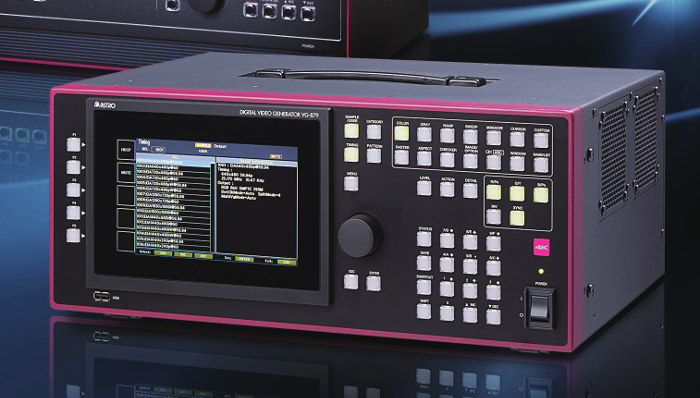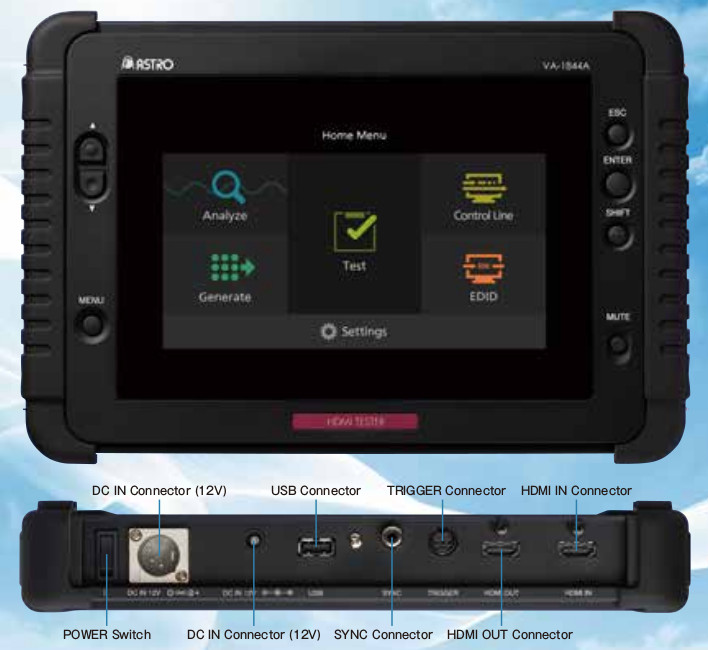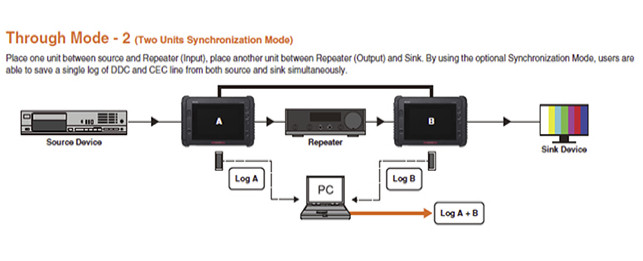8K media players and 8K TVs are coming, but if you develop one of those products how do you test them since 8K players/TVs are not available just yet. Answer: Test equipment.
Astro Design offers just that with their VG-879 digital video generator, as well as their VA-1844A HDMI protocol analyzer.

VG-879 digital video generator key features:
- 4K/60p is transmitted by one channel of 12G-SDI.
- Max.4 slot-type interface units can be selected from 12G-SDI, HDMI2.0b 3G or 6G, DisplayPort 1.2a, V-by-One and Analog.
- By synchronizing 4 or 2 units of VG-879, 8K/120p or 8K/60p signals are supported. (8K/120p by V-by-One HS, 8K/60p by V-by-One HS and HDMI.)
- HDMI 2.0b test functions supported EIA CEA-861-F Timing Format including 4K/50, 60p, YCBCR 4:4:4/4:2:2/4:2:0 timing.
- SCDC parameter change and status display.
- ITU-R BT.2020 color bar and video output setting
- 4K6G with Scrambling Enable setting
- CEA-861.3 HDR (High Dynamic Range) InfoFrame setting
- HDR Test Patterns supported (New)
- 21:9 test patterns as option (VT-8500-0014)
- HDMI2.0 Compliance Test (MOI) (to be supported later.)
- Program data and operation are backwards compatible with VG-870 series.
- Pre-installed 4K and 3D test patterns.
- Optional 8K and 4K HDR Picture Library (VT-7009).
So the equipment does not support 8K 120 Hz using HDMI 2.1 (they are working on a new model for that), but instead through a synchronization module that can handle 8K @ 120 Hz using four video generator as illustrated below.
That generator is useful is you are developing an 8K monitor or television, but what if you are working on a player instead? You can use an HDMI protocol analyzer connected to your set-top box / media player / board instead.
Astro Design VA-1844A model does that with a 7″ display, but is limited to 4K @ 60 Hz for now:
- 7″ touch screen display
- HDMI Input / Output specifications
- Transfer Rate – TMDS 25 to 594MHz(150MHz at 12bit)
- Deep color – 8, 10, 12, 16 bits (8bit at over 300MHz timings)
- Color Space – RGB / YCbCr 444, 422, 420
- HDCP 1.4 and 2.2
- I2S / SPDIF 8ch – 32KHz to 192KHz (L-PCM 2 to 8 channels)
- Compressed Audio – Header (Pa to Pd) decode supported
- DDC ver.1.4 (DDC 2B)
- E-EDID – Supported (CEA EDID Timing Extension : CEA-861-F)
- Protocol analysis of 4K/60p 4:4:4 (Max pixel clock 600MHz) able to analyze and display image.
- Capable of HDMI 2.0b signal generation
- Synchronization of two units for “Through Mode 2” test environment to gather data for source and sink
- Power Supply – 12V via power barrel jack, or battery
- Dimensions – 269 x 182 x 41 mm
- Weight – Around 1.25 kg
The equipment comes with 16GB USB memory, and software such as a Log Viewer and an EDID Editor. It can also be useful to test various HDMI modes and timing, instead of purchasing a bunch of TVs for testing.
I found about Astro Design products via a video recently uploaded by Charbax 
Check out the product pages for VG-879 and VA-1844A for more details.

Jean-Luc started CNX Software in 2010 as a part-time endeavor, before quitting his job as a software engineering manager, and starting to write daily news, and reviews full time later in 2011.
Support CNX Software! Donate via cryptocurrencies, become a Patron on Patreon, or purchase goods on Amazon or Aliexpress








Does anyone know a rough estimate on a price?
But you can watch and play 8k on a correctly spec’d PC. There are lots of posts and conversations on Video forums.
It’s possible to play 8K videos, but unless you actually have a 8K monitor (which already exist for a few thousands dollars), they won’t be played at 8K resolution, but downscaled to whatever resolution your graphics card supports. Each TV / monitor behaves slightly differently, so this type of tool allows to test different parameters in a way that’s not possible with a single monitor/TV.
they will be indeed rendered at 8k, but not shown at 8k, which states that a good computer can play 8k video with not too much hassle. If you open a 4k video in a 1080p screen your computer is eating as much resources as playing the same video in a 2160p screen.
Importante to remember there is no 8k is 16k. If you multiply vertical resolución by horizontal resolutión and then divide by 16 you get the same number that you have when you múltiply FHD vertical by horizontal resolution…
On some Audio Visual forms it has been discussed that unless you have a very large TV, 8K is not much use in the home , viewing distance from screen, human eye resolution and more issues.